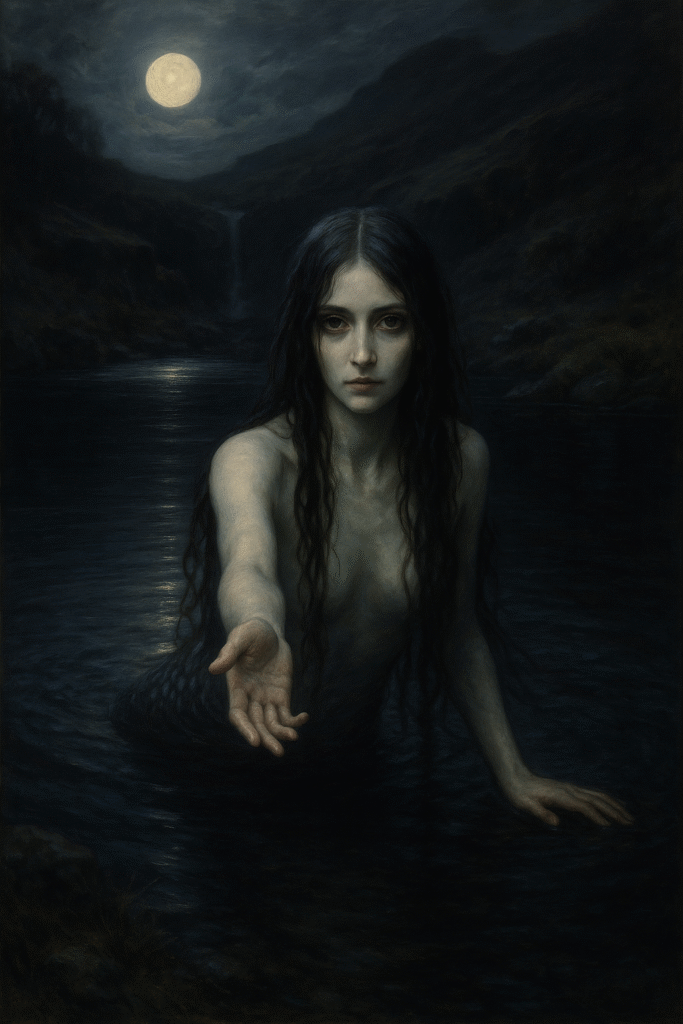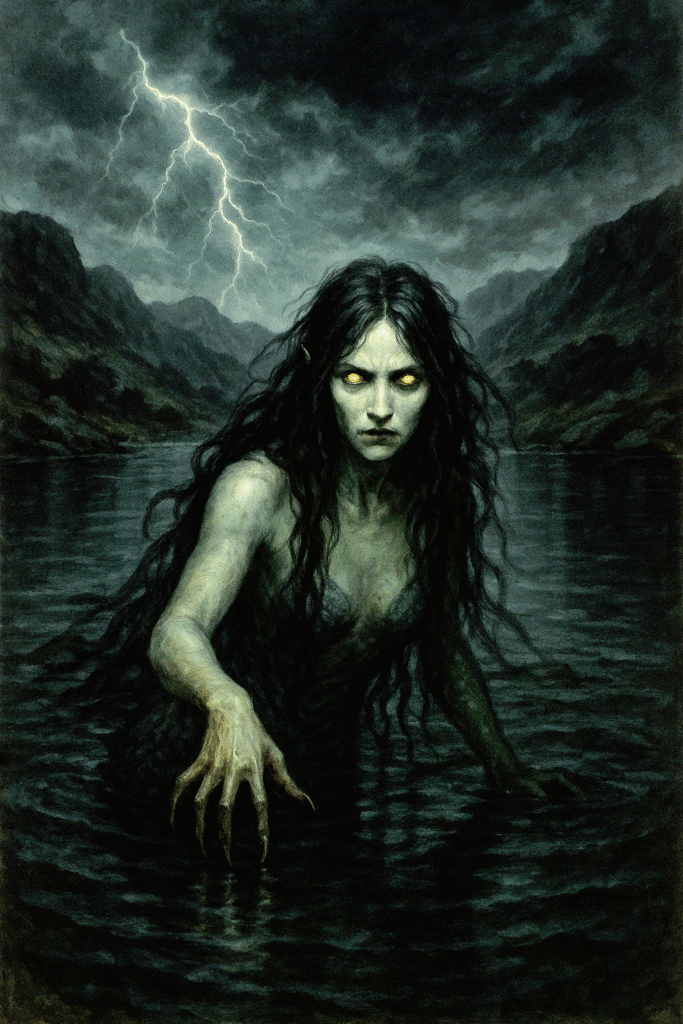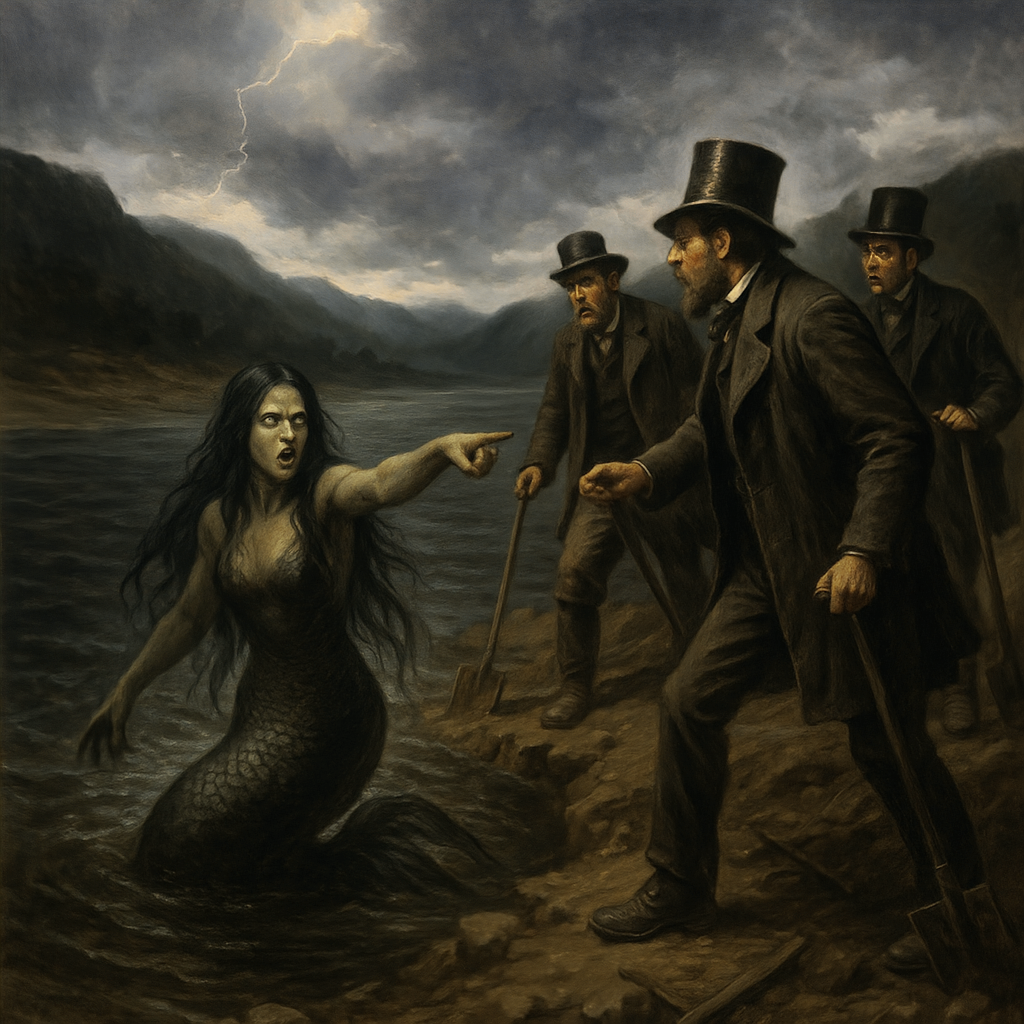A Saltwater Mystery in the Hills

With its picturesque rolling hills and stunning landscapes, the Peak District may seem an unlikely place to encounter a mermaid. Yet tucked just below the plateau of Kinder Scout in the Derbyshire dales lies a place shrouded in myth — the Mermaid’s Pool.
This eerie, reflective body of water has captured imaginations for centuries. What makes it so unusual? For one, it is a saltwater pool — an oddity considering it’s nearly a hundred miles from the nearest coastline. Second, it sits near Kinder Downfall, a waterfall that sometimes appears to flow upward when strong winds blow, adding to the area’s mystical reputation.
The Kinder Scout Mermaid
Locals whisper that the pool is home to a mermaid with powers both benevolent and deadly. It is said that if you approach the pool under a full moon, the mermaid may appear — and if you accept her outstretched hand, one of two fates awaits: eternal life or a watery death. Some claim it’s a blessing, others a curse, but all agree the Mermaid’s Pool is no ordinary place.

Legends suggest the pool was once used for Celtic water rituals, and its healing properties only deepen the myth. But behind the tranquil surface lies a darkness — one that hints at the older, more dangerous origins of mermaid folklore.
The Black Mere Mermaid
The Peak District holds not one, but two mermaid legends. The second tale hails from Black Mere Pool (also known as Blake Mere) in Staffordshire. While the Kinder mermaid is mysterious, the mermaid of Black Mere is truly sinister.

According to legend, the mermaid came from the sea, brought inland by a sailor from Thorncliffe who had fallen in love with her. After his death, she became enraged, unable to return to the ocean, and began haunting the lake.
A darker version tells of a beautiful young woman accused of witchcraft by a man named Joshua Linnet, whom she had spurned. She was drowned in the lake, but with her dying breath, she cursed him. Three days later, Joshua was found dead by the water’s edge, his body covered in claw marks. From that day, it was believed her vengeful spirit took the form of a mermaid — one not to be trifled with.
Even the wildlife avoids the lake. Birds refuse to fly over it. Animals won’t drink from it. The lake is still said to be cursed.
The last known sighting came in the mid-19th century, when locals attempted to drain the pool, believing it was bottomless. They dug a drainage ditch along the southern bank, but their efforts were met with a chilling warning. The mermaid allegedly appeared and threatened to flood the nearby villages of Leek and Leekfrith unless they stopped. The ditch was abandoned — and remains visible to this day.

The Dark Origins of Mermaids
Today, mermaids are often portrayed as whimsical, infantilised creatures marketed to children. But their true origins are steeped in darkness.
The idea of mermaids predates written history. As far back as 5000 BC in Babylon, the god Ea — a fish-bodied deity — was worshipped. Though not technically a mermaid, he laid the foundation for later myths. In 1000 BC, the Syrian goddess Atargatis fell in love with a mortal shepherd. Their union produced a daughter who would later become the legendary queen Semiramis. But tragedy struck — the shepherd could not withstand the divine passion of the goddess, and he died as a result. Overcome with grief and guilt, Atargatis cast herself into a sacred lake. The waters transformed her into the first mermaid: a radiant woman from the waist up, with the shimmering tail of a fish below.

The Greeks adopted this story into the myth of Aphrodite Derceto, and began to expand mermaid lore. They created Nereids — sea nymphs who sometimes had tails — and the infamous Sirens, originally depicted as bird-bodied temptresses who lured sailors to their doom with song. When the Sirens lost a singing contest with the Muses, they cast themselves into the sea, some transforming into fish-bodied creatures — bridging the gap between harpy and mermaid.
The Romans later described Sirens as daughters of the river god Achelous, and it’s here that the fish-tailed beauty of mermaids began to solidify.
One particularly striking legend is that of Thessalonike, sister of Alexander the Great. After washing her hair in water from the Fountain of Immortality, she became immortal. Upon Alexander’s death, she flung herself into the sea and became a mermaid. She now roams the Aegean Sea, stopping ships and asking if Alexander still reigns. If sailors answer yes, they are spared. If not — they are doomed.

Mermaids Across the World
Legends of mermaids aren’t confined to the Mediterranean. In the British Isles alone, we find:
- Casg – A Scottish sea maiden.
- Merrows – Irish half-human, half-fish beings said to grant wishes.
- Selkies – Seal folk who shed their skins to walk on land.
Across cultures — in Spanish, French, Italian, Polish, Romanian, Portuguese, and Filipino folklore — the words for “siren” and “mermaid” are interchangeable, each describing a mysterious creature tied to the water, beauty, and danger.
But all these legends share one detail: they live by the sea.
Which makes the two mermaid pools in the Peak District even more strange. Why here? Why in the quiet, wind-swept hills of central England?
Is it just old folklore — or is there something more to these waters?
Would You Take Her Hand?
The next time you find yourself hiking the rugged paths of Kinder Scout, or peering into the black stillness of Black Mere Pool, ask yourself:
If you saw her — the pale, beautiful woman floating in the moonlight — and she reached out her hand to you…
Would you take it?
Sources & Further Reading
- The Mermaid’s Pool – Derbyshire Legend – www.peakdistrictonline.co.uk
- Black Mere Pool: The Staffordshire Mermaid Legend – www.paranormaldatabase.com
- Hutton, Ronald – Pagan Britain, Yale University Press (2013)
- Atargatis and Ancient Mermaids – www.ancient-origins.net
- Sirens and Mermaids in Greek Mythology – www.theoi.com
- Black Mere Pool Folklore – www.britishlegend.com
- Kinder Scout Myths – www.mysteriesofbritain.co.uk
